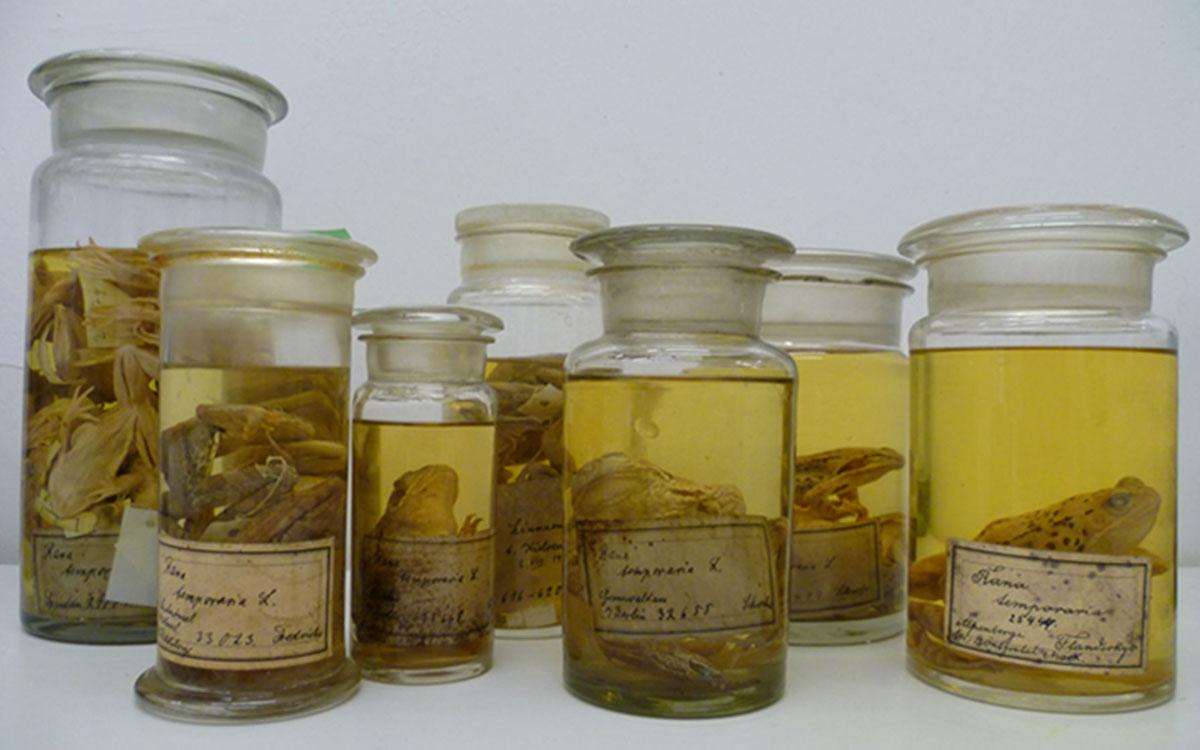Research aim
Within the framework of the umbrella project "Bridging in Biodiversity Science" (BIBS), that focusses on rapid transitions of ecological systems due to anthropogenic disturbances, I investigate potential morphological trait changes of amphibians occurring in near natural and novel habitats along spatio-temporal gradients ranging from Brandenburg to Berlin and from the end of the 19th century to present. These character alterations can serve as a proxy for species’ adaptation to alternated environmental conditions. As model system I concentrate on the common frog (Rana temporaria), that has persisted through all changes over time and is abundant in the museum collection.
Methodology
Besides traditional methods, such as measuring body sizes, I also apply the modern method of micro-3D-computed tomography (µCT) to determine levels of fluctuating asymmetry in the limbs of the frogs. Fluctuating asymmetry can be caused by disturbances during development due to environmental stress. Furthermore I use stable isotope analyses to check for an accumulation of nitrogen through air pollution and the application of fertilizers.
Partners
Berlin-Brandenburg Institute of Advanced Biodiversity Research (BBIB)
